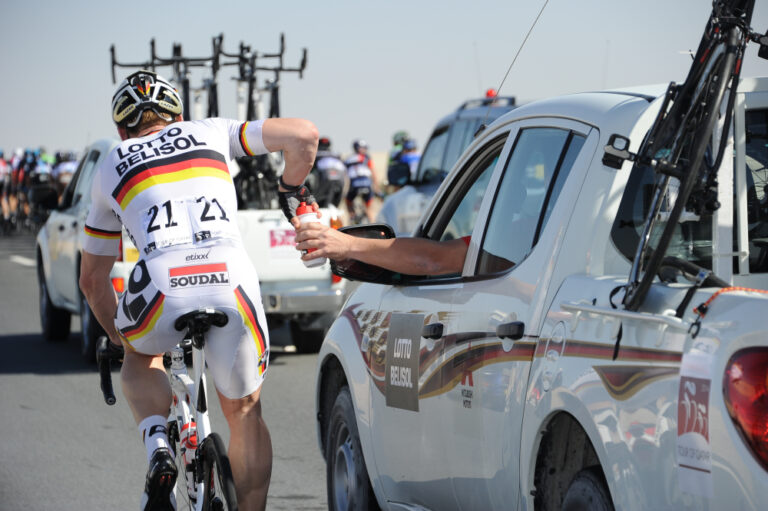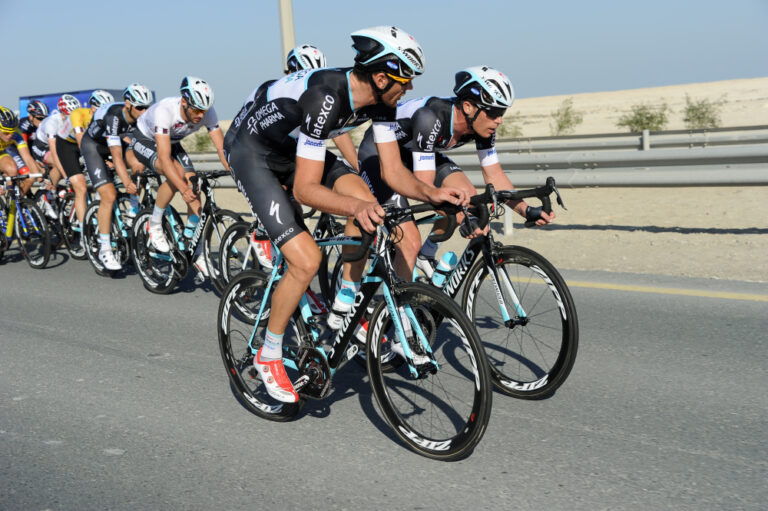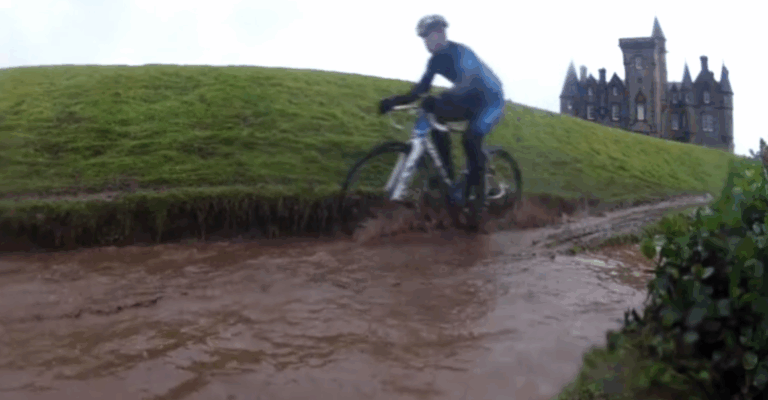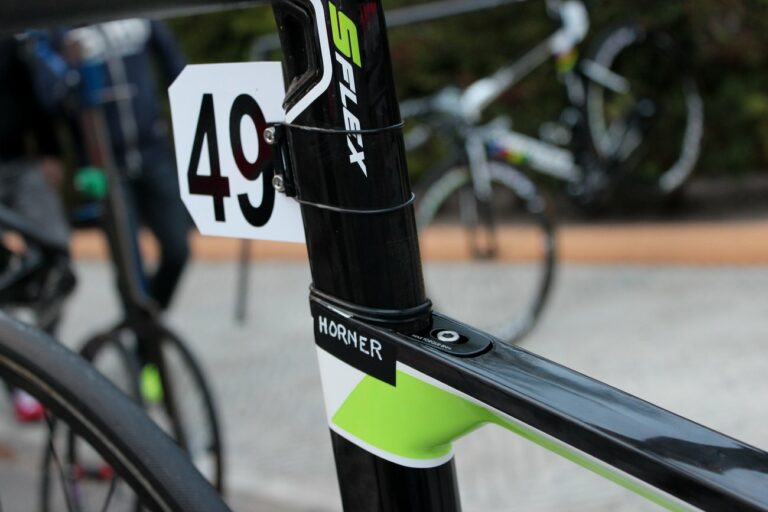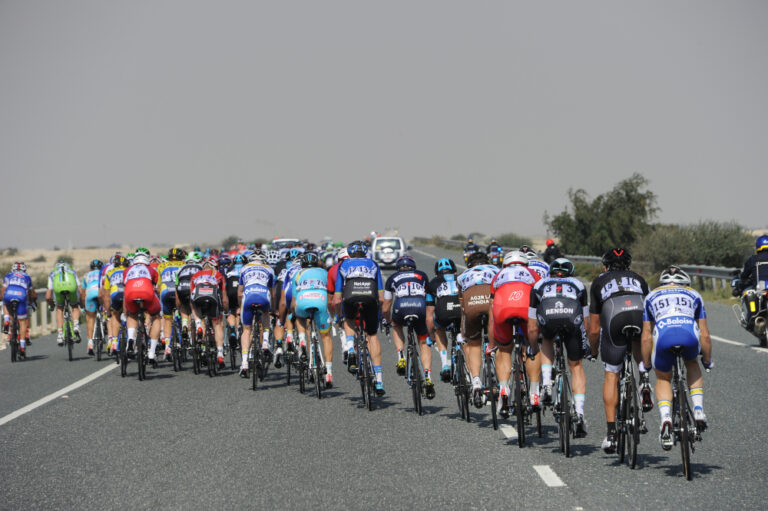The Exposure Strada is a hugely impressive front light ideal for rides under cover of darkness thanks to an 800-lumen output, a road-specific beam pattern, and superb build quality.
Let’s get the bad news out of the way first. The Strada is undoubtedly a premium option at £269.95, but if you regularly ride through winter on unlit roads, whether commuting or on training loops, it will provide all the light you need in a package designed specifically for the job in hand.
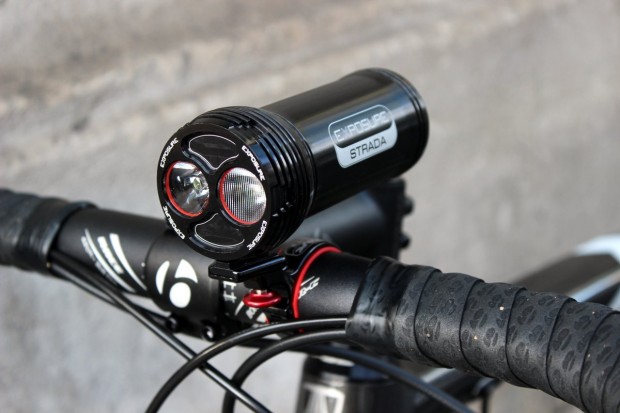
Exposure were among the pioneers of self-contained, high-powered lights and the Strada is a one-piece unit. Having the battery (one big enough to provide suitable run times for a light of this calibre) and LEDs in a single body means the Strada takes up a fair enough of real estate on the handlebar, particularly compared to something like the Gemini Duo, which has a separate battery pack which straps to the toptube, but it’s not particularly heavy at 228g. There are pros and cons to both setups but the Strada avoids having any additional cables on the bike, unless you choose to use the remote switch, and it certainly looks the part.
It’s a robust unit, too, made in the UK from CNC-machined aluminium. It’s a fine piece of engineering, sturdy in hand and robust enough, we expect, to stand the test of time over a series of winters.
Exposure supply the Strada with a smart quick release bracket. The bracket itself isn’t quick release as you need to fix it on to the handlebar with a 4mm Allen key, but the unit, which has a small cleat on the bottom, slides in to place and is secured by a steel pin, which you pull down to release and remove the light. It’s easy to use and means you don’t have a £270 light sitting unattended on your handlebar when you’re away from the bike.
This is the fifth version of the Strada, dubbed the Mk5, and it has a maximum claimed output of 800 lumens via two Cree XPG R5 LEDs. Exposure have a wide range of high-powered lights – up to a dazzling 2,200 lumens – but the Strada is their road-specific lamp.
That’s because the beam pattern is shaped, Exposure say, to mimic a car headlight, so not to dazzle oncoming traffic. Of those two LEDs, the left one, as you’re looking from the saddle, has a wide, flat beam which provides an excellent spread of light across the tarmac and the right has a focused beam which creates a generous tunnel of vision up the road.
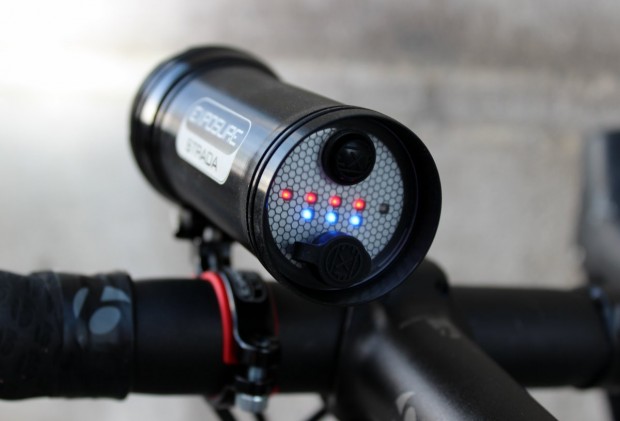
The two LEDs combine to offer plenty of illumination for fast training on unfamiliar roads on its highest setting at 800 lumens, though you can also get away with less than that on familiar terrain when using one of the medium settings.
The Strada has variety programs to choose from via the light’s Optimised Mode Selection (OMS). The six programs offer a wide spread of power options, with battery life adjusted accordingly. For example, program one is the most powerful and has a claimed battery life of three, 10 and 24 hours on the high, medium and low settings respectively. If I’m on a night ride, however, I’m unlikely to use the lowest setting, so program three has just two settings (high and medium, with the same run times as program one), which makes it easier to toggle between the two when riding. I primarily stick with the highest setting on dark country lanes but dip the beam to the lower setting when approaching a car and the Strada’s remote switch (more on that below) makes it easier to do so.
Program six, meanwhile, has two settings offering ten hours and 24 hours of illumination, with the latter ideal for urban roads. You can also access a flashing mode from any of the programs by pressing the button on the back of the light for one second and releasing. That’s another useful weapon in the armoury when commuting.
Each of the programs, and the associated run times, are printed on the unit itself, which means you won’t lose them on a bit of paper, and it helps if you want to switch programs mid-ride. To do that, you have to hold down the power button when the light’s off to scroll through the programs. The same button is also used to access the flashing mode, as described above, and to turn the light on (with a double click) and off (by holding the button). It’s all explained in the supplied instructions.
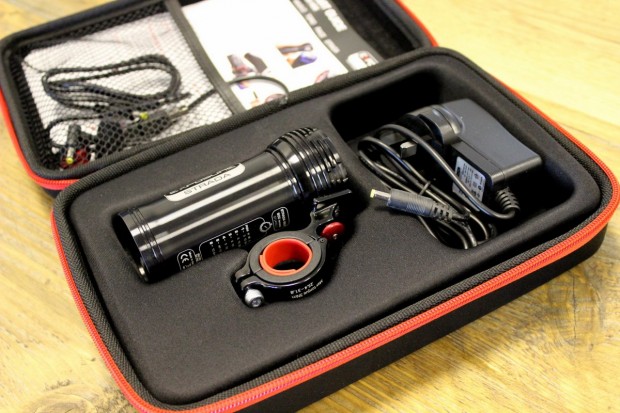
You’ll also find two rows of LEDs on the back of the light. The five red LEDs indicate what program you are selecting when choosing an OMS option, and then display battery life when the light is on. Each of the lights represent 20 per cent of battery life, so, for example, if three lights are on then there’s between 40 and 60 per cent charge left. The blue lights, meanwhile, show what power setting you are on: three lights is high, two is medium and one is low. However, depending on the angle of the unit, it can be difficult to see either row of lights when riding as they’re recessed approximately one centimetre into the back of the unit.
Out back there’s also the charging port and the Strada can be charged by the mains or via USB (Exposure provide cables for both). The charging port itself is a DC port so the USB cable is USB to DC, rather than USB to micro/mini USB as is the case with many lights, so you’ll like need to buy another cable if you want a spare to keep at work, for instance.
All that’s supplied in a plush box, which is handy to keep everything in to ensure nothing goes missing. The box also contains a remote switch which plugs in to the DC port and has a button which can be velcroed to your handlebar, which means you barely have to move your hands to toggle between the light modes. That’s a really nifty feature and the remote button performs all the same functions as the button on the light itself.
Conclusion
The Exposure Strada is a serious investment but you get a serious light in return for your money. The beam pattern is excellent and there are enough power settings for everything from night rides to commuting. The build quality is also superb and it’s likely to stand the test of time.
Price: £269.95
Website: Exposure Lights

